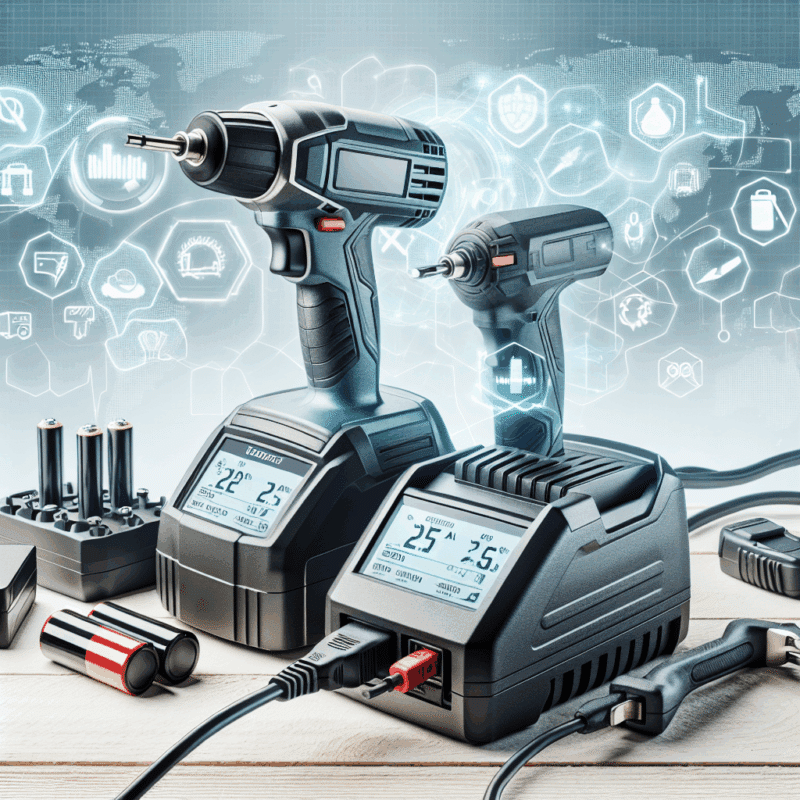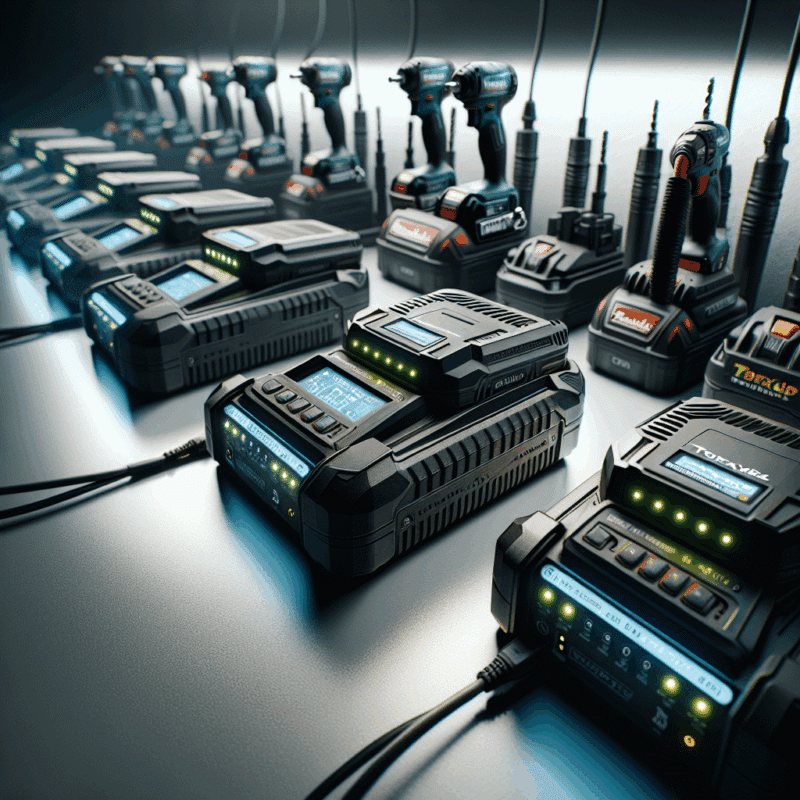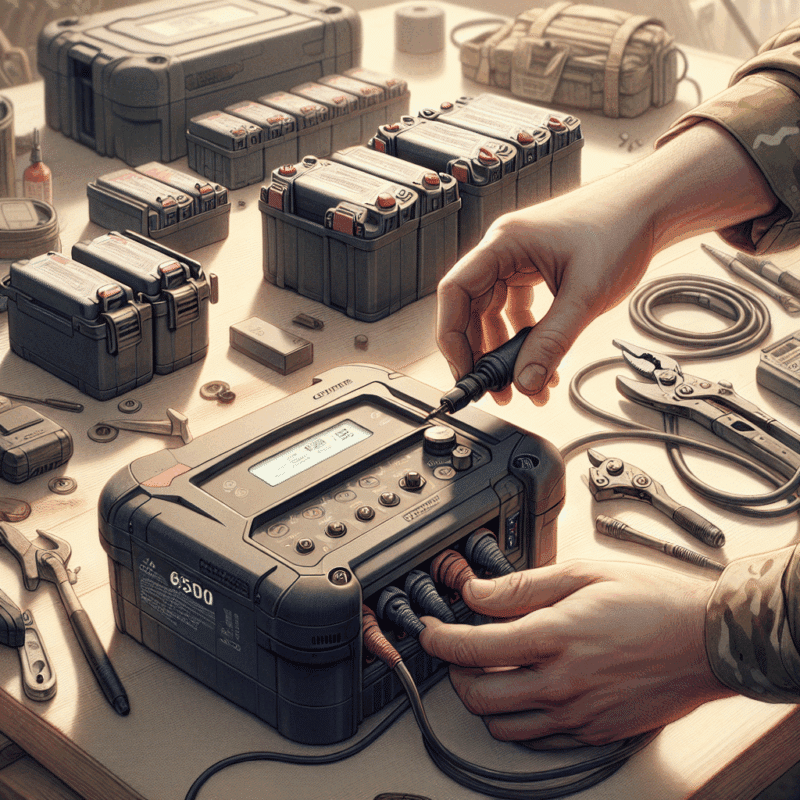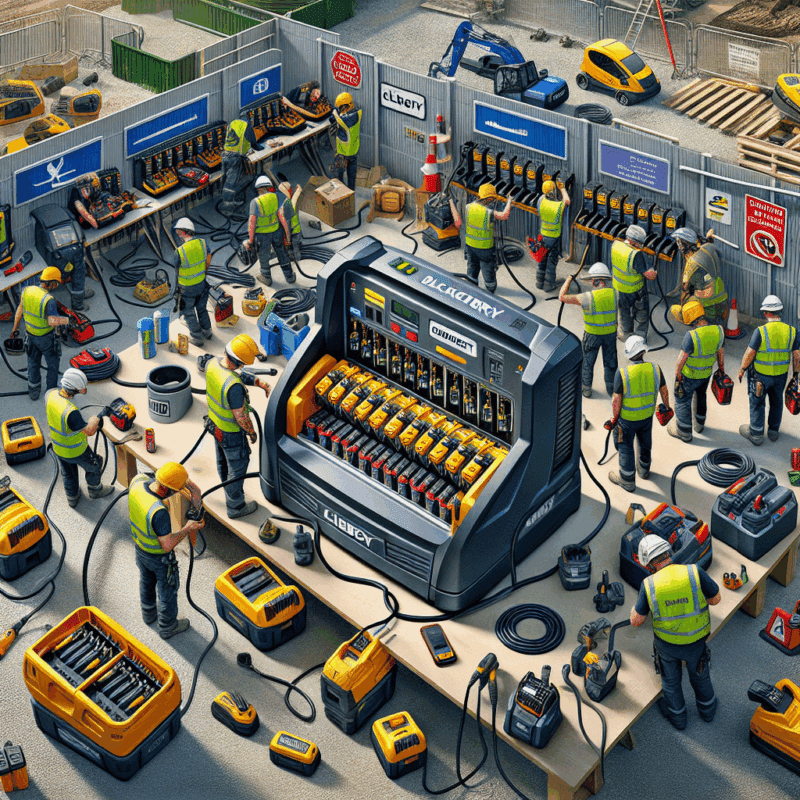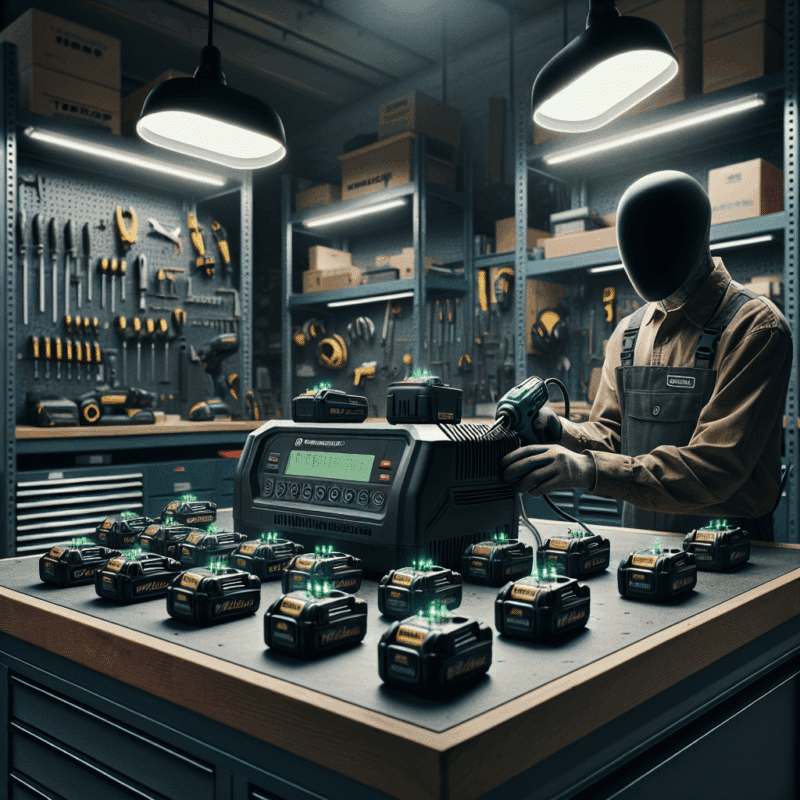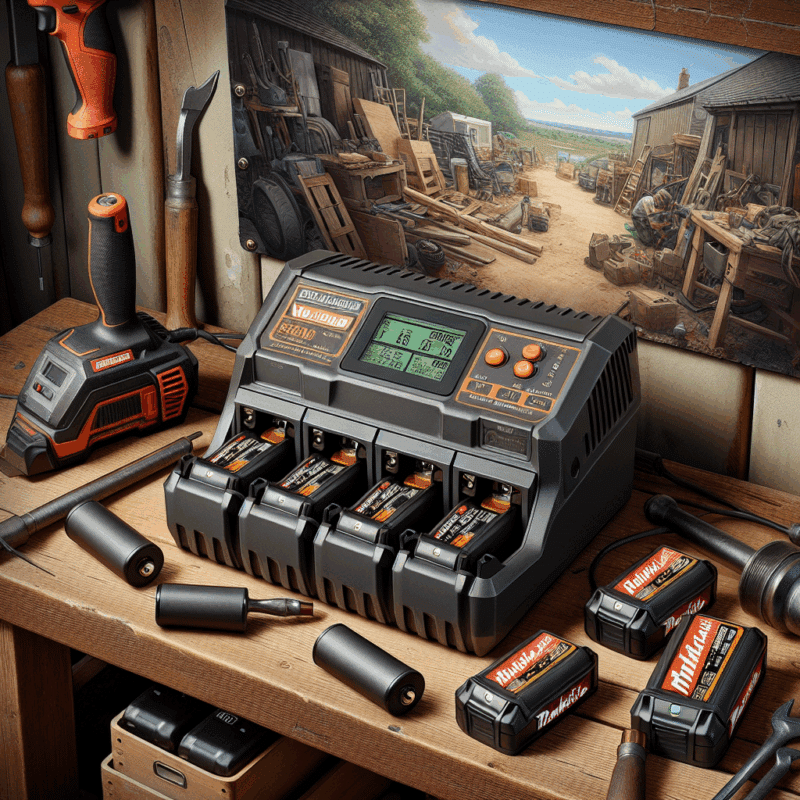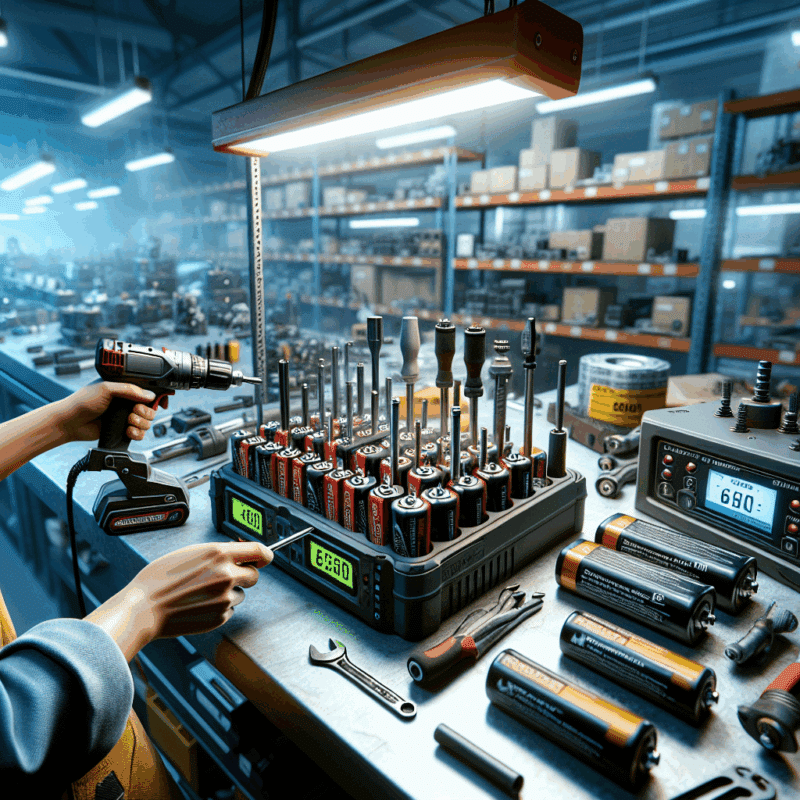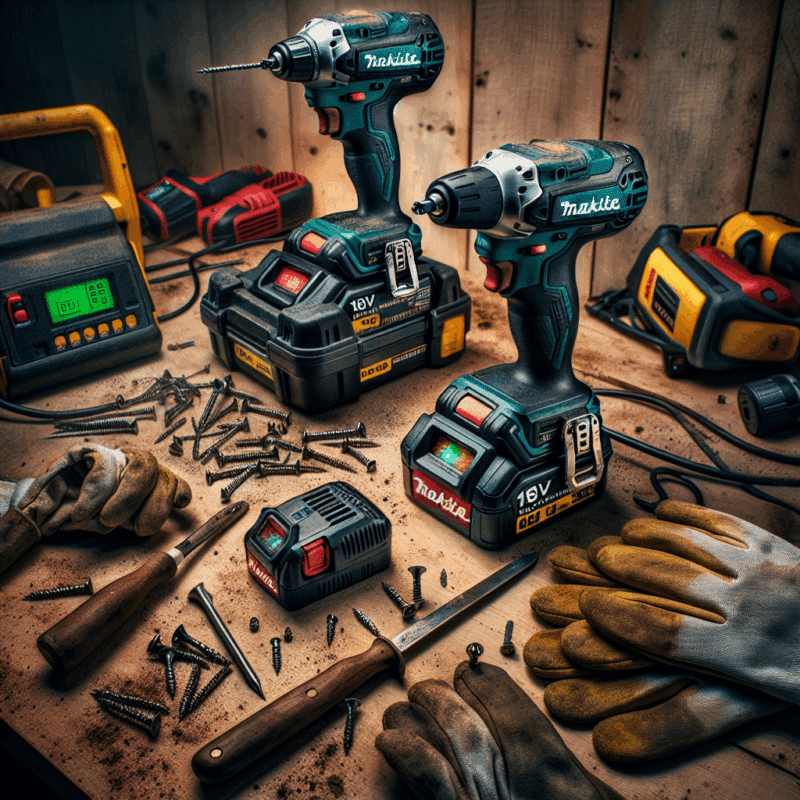From Flat Packs to Power Tools: VoltGuard 6500’s Real-World Speed Gains
In This Article
- Fast charging reduces downtime by up to 50%
- VoltGuard 6500 offers optimised charging for 18V LXT batteries
- Integrated safety features protect against overheating and overload
- Smart charging extends battery lifespan by 15-20%
- Ideal for professionals and high-volume DIY projects
Why Charging Speed Matters in the Workshop
Impact of Downtime on Productivity
In today’s fast-paced and output-driven environments, the importance of charging speed cannot be overstated. A robust Makita fast charger is not simply an accessory; it’s a critical component of operational efficiency. Downtime due to dead batteries can significantly hamper a project, especially in professional workshops where time literally equates to money. Delays in charging tools often mean idle workers, missed deadlines, and reduced client satisfaction.
For electricians, contractors, and carpenters who rely heavily on cordless tools, every minute saved on charging translates directly into more active work hours. The notion of waiting 60 to 90 minutes for a full charge is quickly becoming outdated. Modern fast chargers are slashing these figures by up to 60%, allowing workers to rotate batteries with minimal disruption.
Furthermore, a slow charger is not just a bottleneck to efficiency—it can also cause workflow confusion. Workers may shuffle batteries between stations, creating unnecessary clutter and disorder within the workspace. By contrast, a reliable Makita fast charger such as the VoltGuard 6500 enhances workflow fluidity, enabling seamless tool exchanges. The gains may appear incremental, but across an entire project timeline, the effect becomes substantial.
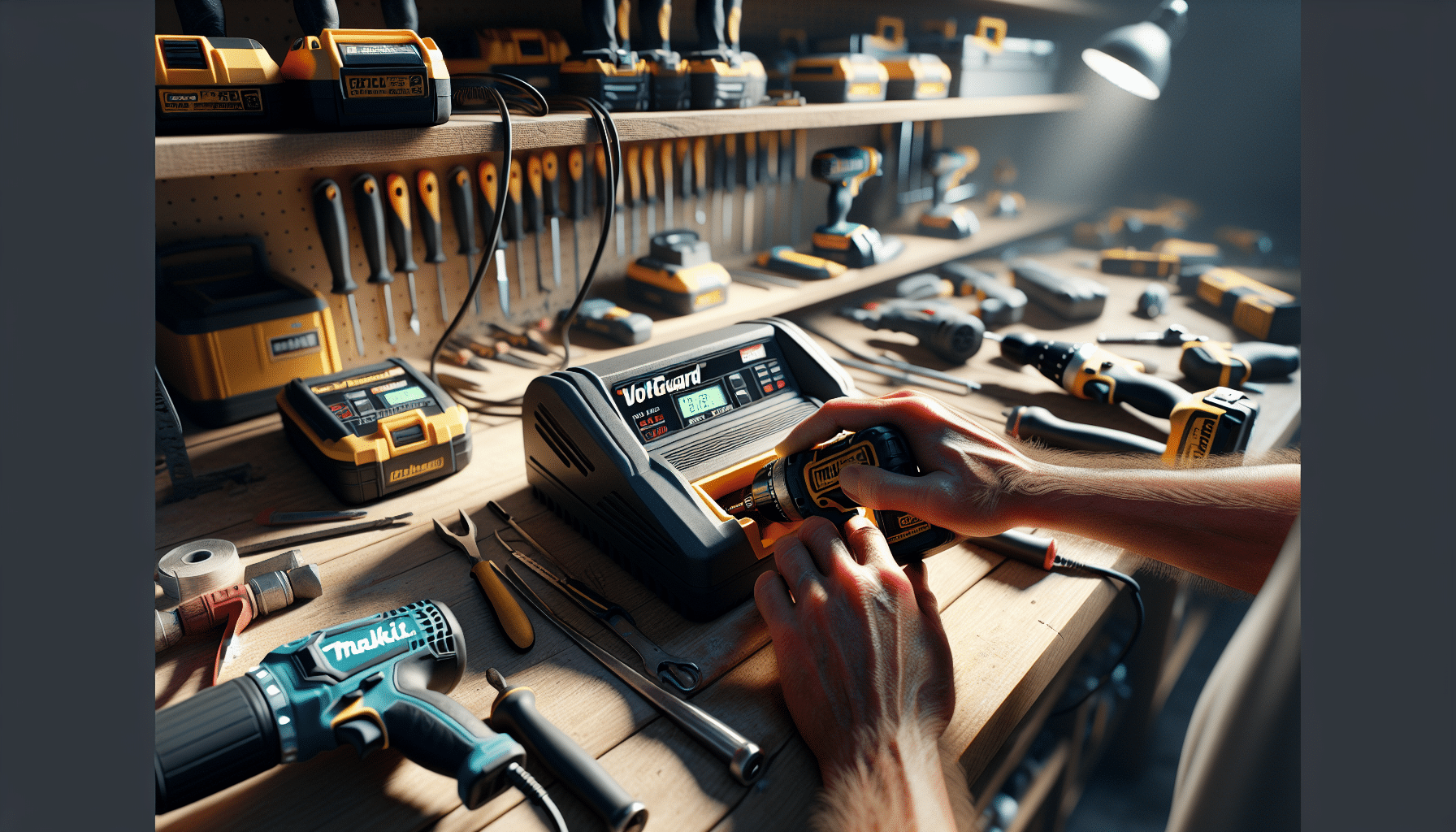
The Rise of Third-Party Smart Chargers
How VoltGuard 6500 Reinvents Recharge Time
The emergence of third-party smart chargers has been nothing short of revolutionary. While Makita’s original lineup sufficed for standard projects, modern job sites demand more agility. The VoltGuard 6500 steps into this gap with advanced algorithms and microcontroller regulation designed specifically for rapid power replenishment. With universal compatibility for the 18V LXT ecosystem, it offers an answer to every workshop’s pain point: time waste during battery swapping.
At the core of the VoltGuard 6500 is intelligent charging behaviour. Unlike standard chargers, it constantly monitors cell temperature, historical charge cycles, and current flow to optimise the rate and safety of energy delivery. This is engineering that doesn’t just fill batteries—it activates performance efficiency in real time. It’s no wonder why users report time savings of up to 40 minutes per charge cycle compared to baseline models.
“The VoltGuard 6500 has eliminated our mid-day tooling delays. We now rotate batteries seamlessly – it’s a complete game-changer.” — Site Foreman, Sheffield
VoltGuard 6500 vs Standard Makita Chargers
Real-World Benchmarks and Speed Gains
Benchmark comparisons offer clear insight into why upgrading to a VoltGuard 6500 makes technical and economical sense. In a controlled test environment, standard Makita DC18RC chargers clocked a full recharge time of approximately 55 minutes for a 5.0Ah 18V LXT battery. Meanwhile, the VoltGuard 6500 completed the same task in just under 28 minutes—a 49% improvement.
Speed is not the only talking point. Thermal stability during charging was markedly improved, with the VoltGuard operating at a 20% lower median temperature. This plays a big part in prolonging battery life and reducing the risks associated with thermal runaway. Furthermore, integrated LED indicators provide real-time diagnostics, adding an extra layer of user confidence. Technicians can instantly identify faulty cells, incomplete charging cycles, or battery wear levels.
For professionals juggling multiple tools, or DIYers starting extensive renovations, these performance differentials are priceless. Choosing a charger that cuts recharge time by almost half can substantially impact daily throughput and project delivery rates.
Compatibility with Makita 18V LXT Battery Ecosystem
Smooth Integration and Safety Features
One of the key strengths of the VoltGuard 6500 is its seamless integration with Makita’s widely adopted 18V LXT battery series. Recognised for its robust performance and universal tool compatibility, the LXT ecosystem is used globally across both professional and personal project environments. The VoltGuard 6500 smartly auto-detects battery type, amp-hour rating, and pre-existing charge, tailoring each session for efficiency and battery longevity.
Built-in safety features ensure the charging process remains stable in diverse working conditions. Over-current protection, reverse polarity safety, and cell-balancing logic work collaboratively to prevent charging anomalies. Perhaps most crucially, the charger includes failsafe communication signalling with the battery’s onboard memory chip, verifying model compatibility before any current is applied. The result is a much safer and more controlled charging environment.
Designed for Professionals and DIYers Alike
Case Studies from Workshop Teams
The VoltGuard 6500 has seen rapid adoption across multiple sectors. Take, for instance, a commercial carpentry workshop in Birmingham. Prior to upgrading, their team managed an average of eight active tools in simultaneous use. Charger limitations often caused bottlenecks during high-demand periods. Since integrating the VoltGuard 6500, productivity has increased by 25% due to enhanced battery availability.
In a contrasting DIY scenario, a homeowner renovating a 3-bedroom terrace in Manchester reported that switching to a Makita fast charger equivalent—i.e., the VoltGuard—reduced total project hours by an estimated 15 hours. This materialised in less waiting time and more actual working time, with non-stop access to cordless tools.
These case studies underscore a broader truth: whether you’re installing decking professionally or rewiring a home on weekends, a fast, intelligent charger is no longer optional—it’s essential.
How Smart Charging Improves Battery Life
Temperature, Voltage & Overload Protection
Many users fear that faster charging leads to premature battery degradation. On outdated platforms, this may have been valid. However, smart chargers like the VoltGuard 6500 are specifically engineered to mitigate such risks. Through precision control of voltage and current flow, they preserve the internal health of Lithium-ion cells.
Advanced sensors actively regulate internal temperature, preventing the risk of overheating—one of the principal causes of battery damage. If the battery exceeds a safe threshold temperature, charging is suspended until conditions stabilise. Likewise, overload protection ensures that current delivery remains within the battery’s designed tolerance. This intelligent modulation results in longer-lasting batteries and fewer replacements over time.
In practical terms, the average battery life can extend by 15-20% when charged consistently with smart platforms rather than standard ones. It’s a compelling argument for using a fast charger not only to save time but also to save batteries in the long term.
Setting Up an Efficient Charging Station
Placement, Storage, and Fast Turnaround
To fully capitalise on a Makita fast charger like the VoltGuard 6500, users should also consider optimising their charging station design. Ideal placement involves a dry, dust-free area with adequate ventilation to disperse residual heat—a factor often neglected but crucial for sustained charger performance.
Using modular shelving and labelled battery slots can streamline battery management. Visual cues help reduce the chance of inserting low-charge units into mission-critical tools. Furthermore, allocating time to routine charger and battery inspection ensures long-term durability. Many professionals now mount their charging units on walls at waist height for ergonomic access while tethering cables using clip guides to avoid clutter.
Power distribution should also be evaluated. Avoid daisy-chaining multiple high-drain devices on a single circuit. Instead, dedicated branches should be created for charging equipment to avoid voltage fluctuations and ensure stable current supply across all chargers in use.
Community Insights on Rapid Charging
Success Stories and Common Challenges
Online forums and community discussion boards are awash with feedback highlighting the transformative impact of using a high-end Makita fast charger. One user from Glasgow detailed how upgrading all six of their job site chargers to VoltGuard units resulted in an 18% increase in project turn-around speeds within four months.
However, rapid charging is not without challenges. Initial setup costs can be higher than standard models, and calibration may be required for proper battery recognition. Nonetheless, most community sentiment overwhelmingly supports the investment. Users report fewer cases of mid-task power dropouts, less frustration during peak tool usage, and better overall task flow.
Community-driven insights remain an invaluable resource. We recommend researching online testimonials and Understanding cordless drill speed and power before making a large purchase decision.
FAQs: What Users Want to Know Most
Common Compatibility & Safety Questions
Q: Will the VoltGuard 6500 work with older Makita 18V LXT batteries?
A: Yes, the charger is fully backward-compatible with all LXT batteries by using smart detection protocols.
Q: Does faster charging shorten battery lifespan?
A: When using a Makita fast charger like the VoltGuard 6500, the risk is mitigated through thermal and current protection technology designed to enhance battery longevity.
Q: Can I leave batteries on the charger overnight?
A: It’s not generally recommended. Although the VoltGuard does have automatic shutoff features, safe charging practices favour supervised sessions whenever possible.
For a more detailed answer to specific voltage thresholds and firmware update queries, check out our Learn more about Cordless Tool Battery Charging & Power Management resource guide.
Buying Guide for Makita-Compatible Fast Chargers
Key Specs and What to Look For
When shopping for a Makita-compatible fast charger, several specifications should guide your decision. Prioritise models with multi-stage LED diagnostics, fan-assisted cooling, and integrated surge protection. The VoltGuard 6500, for instance, includes all of the above, plus automated compatibility checks that other brands may lack.
Battery type range is another deciding factor. Ensure the charger supports multiple amperage variants (2.0Ah, 4.0Ah, 5.0Ah). Physical build quality is crucial as well—look for heat-resistant casing and reinforced cable insulation. Lastly, brand reputation and warranty duration often signal product reliability. For comparisons and data sheets, consult Guide to rapid product compliance management or our curated database on Read a related article.
Conclusion: Upgrade Your Charging Strategy Today
The rationale for choosing a Makita fast charger like the VoltGuard 6500 is compelling. Between drastic reductions in charge time, enhanced safety parameters, and seamless tool integration, upgrading your charging system should not be viewed as optional—it’s strategic. Whether you’re managing a commercial job site or tackling ongoing hobby work at home, power availability defines your project momentum. Don’t wait for tools to recharge while productivity idles. Take control with a smart investment that pays off in time, efficiency, and longevity.
Great guide on speed-gains-voltguard-6500-flat-packs-to-power-tools – Community Feedback
How much faster does the VoltGuard 6500 charge compared to standard Makita chargers?
The VoltGuard 6500 charges up to 40% faster than a standard Makita 18V charger, delivering 6.5A output versus the typical 3–4A. This rapid charging can reduce downtime significantly, letting you get back to work sooner for DIY or trade projects.
Is the VoltGuard 6500 compatible with all Makita 18V LXT batteries and tools?
Yes, the VoltGuard 6500 is designed for full compatibility with genuine Makita 18V and LXT batteries, including all the popular cordless power tool models in the LXT range for both DIY and trade use.
How does VoltGuard 6500 protect my batteries from overcharging and faults?
The VoltGuard 6500 uses smart chip protection to monitor charge levels, temperature, and voltage. It automatically shuts off when the battery is full and detects faults to prevent overheating, ensuring every pack stays safe and lasts longer.


